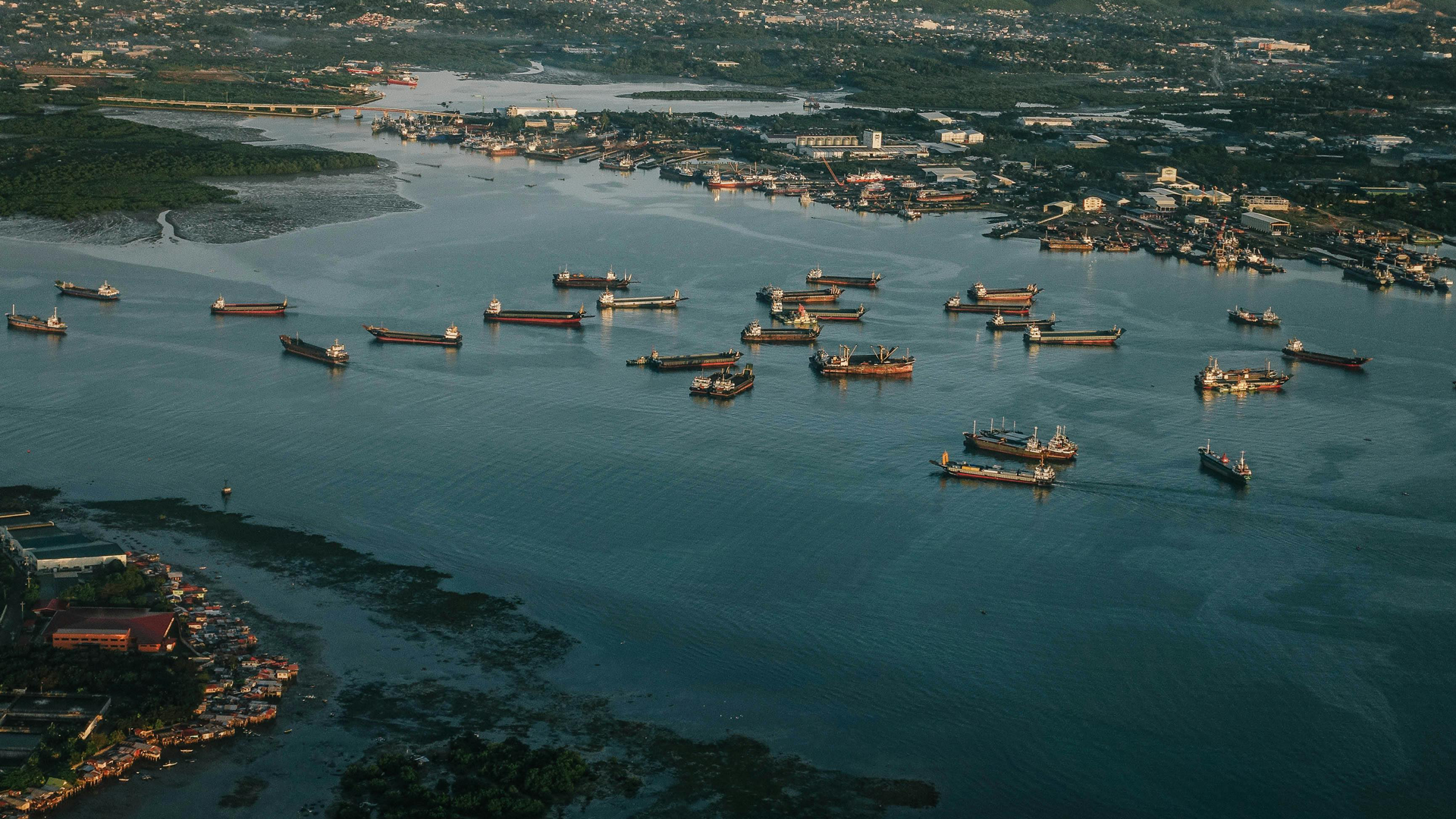Introduction
Listen to the Podcast
Maritime surveillance plays a crucial role in ensuring global security, monitoring environmental changes, and regulating economic activities. Synthetic Aperture Radar (SAR) has emerged as a vital technology in this domain, offering reliable vessel detection capabilities regardless of weather conditions or time of day. Among the different radar frequency bands, X-band SAR is particularly well-suited for ship detection due to its high spatial resolution and sensitivity to fine-scale surface features. This paper examines the advantages of X-band SAR, explores detection methodologies, discusses challenges, and highlights its key applications in maritime monitoring and security.
Advantages of X-band SAR for Ship Detection
High Spatial Resolution
X-band SAR operates in the 8–12 GHz frequency range, enabling significantly higher resolution than lower-frequency SAR systems such as C-band and L-band. This capability allows for the detection of smaller vessels and provides detailed imaging of ship structures, including hull contours, deck layouts, and cargo configurations.
Sensitivity to Surface Features
The shorter wavelength of X-band SAR enhances its sensitivity to small-scale surface variations, making it particularly effective at detecting metal structures on ships. The strong radar backscatter from metallic surfaces enables clear differentiation between vessels and the surrounding ocean, even in rough sea conditions.
Flexible Imaging Modes and High Revisit Rates
Modern X-band SAR satellites, such as TerraSAR-X, COSMO-SkyMed, and PAZ, offer multiple imaging modes, including StripMap, Spotlight, and ScanSAR. These modes allow users to balance resolution and coverage, making it possible to conduct detailed inspections of individual ships or broad-area monitoring of maritime traffic. Furthermore, X-band SAR constellations provide high revisit frequencies, allowing for near-real-time tracking of vessels.
Multi-Angle and Multi-Temporal Capabilities
Multi-angle imaging enhances ship detection by reducing the impact of radar shadowing and layover effects, while multi-temporal analysis facilitates tracking vessel movements over time. This is particularly useful for monitoring unauthorized activities, such as illegal fishing or ship-to-ship transfers.
Methodologies for Ship Detection Using X-band SAR
Constant False Alarm Rate (CFAR) Processing
CFAR is a widely used technique for distinguishing ships from background sea clutter. By dynamically adjusting the detection threshold, CFAR minimizes false alarms and improves detection reliability. Advanced CFAR algorithms use multi-scale adaptation and local contrast enhancement to further optimize performance.
Deep Learning and AI-Based Approaches
Recent advances in artificial intelligence have significantly improved SAR image analysis. Convolutional Neural Networks (CNNs) and Transformer-based models can automatically extract vessel features, classify ships, and minimize false detections. Additionally, Generative Adversarial Networks (GANs) are being explored to enhance image quality and refine ship segmentation techniques.
Polarimetric SAR Analysis
Polarimetric SAR (PolSAR) data allows for better differentiation between ship materials and structures by analyzing how radar waves interact with surfaces. Dual- and quad-polarization techniques improve classification and identification of ship types. Decomposition models, such as Cloude-Pottier and Freeman-Durden, help distinguish ships from non-metallic objects and sea clutter.
Multi-Sensor and Data Fusion Approaches
Combining X-band SAR with other remote sensing sources—such as Automatic Identification System (AIS) data, optical imagery, and hyperspectral sensors—enhances detection accuracy and reduces false positives. Multi-sensor fusion enables improved vessel tracking, anomaly detection, and automated classification.
Advanced SAR Techniques: Interferometry and Tomography
Interferometric SAR (InSAR) can estimate ship motion parameters, including heave and pitch, while Tomographic SAR (TomoSAR) reconstructs three-dimensional ship structures. These advanced techniques enhance target characterization and help distinguish vessels from floating debris or offshore infrastructure.
Challenges in X-band SAR Ship Detection
Sea State and Environmental Effects
Rough sea conditions can introduce clutter in SAR images, complicating ship detection. Advanced filtering techniques and wave-suppression algorithms help mitigate these effects, improving detection performance in high-sea-state environments.
Limited Swath Coverage
High-resolution X-band SAR images typically cover relatively small areas, limiting large-scale surveillance capabilities. However, the increasing deployment of wide-swath imaging modes and coordinated satellite constellations is helping to address this limitation.
Radar Shadowing and Layover Effects
Ships located near coastal structures or other large vessels may experience radar shadowing and layover effects, obscuring parts of the vessel in SAR imagery. Multi-angle imaging and SAR tomography techniques help overcome these issues by reconstructing accurate ship geometries.
Applications of X-band SAR in Maritime Surveillance
Monitoring Illegal Activities
X-band SAR is a key technology in detecting illegal maritime activities, including unauthorized fishing, smuggling, and piracy. Authorities use SAR in conjunction with AIS data to identify vessels operating without transponders, often referred to as “dark ships.”
Maritime Traffic Regulation and Port Management
SAR-based monitoring assists in vessel traffic control, reducing collision risks and optimizing port operations. Real-time ship movement analysis supports efficient logistics planning and enhances maritime safety.
Search and Rescue (SAR) Operations
X-band SAR imagery helps locate vessels in distress, detect debris fields, and track drifting life rafts. AI-powered SAR analytics are improving response times and increasing the effectiveness of emergency operations.
Naval and Defense Applications
Military forces leverage X-band SAR for maritime domain awareness, threat assessment, and surveillance of foreign naval activities. Emerging technologies such as passive radar and electronic warfare detection are further expanding defense capabilities.
Conclusion
X-band SAR has proven to be an invaluable tool for ship detection, offering unmatched resolution, operational flexibility, and all-weather capabilities. While challenges such as sea clutter and limited coverage persist, advancements in AI, sensor fusion, and SAR imaging techniques are pushing the boundaries of maritime surveillance. As spaceborne SAR technology continues to evolve, its role in securing global maritime domains will expand, supporting defense, commerce, and environmental sustainability.
Expand Your Knowledge – Dive Deeper
Further Reading
- Vachon, P. W. (2013). Development of an X-band SAR ship detectability model: analysis of TerraSAR-X ocean imagery.
- Velotto, D. (2016). Oil spill and ship detection using high resolution polarimetric X-band SAR data (Doctoral dissertation, Technische Universität München).
- Hong, S. J., Baek, W. K., & Jung, H. S. (2020). Ship detection from X-band SAR images using M2Det deep learning model. Applied Sciences, 10(21), 7751.
- Neill, S. P., & Hashemi, M. R. (2018). Chapter 7-in situ and remote methods for resource characterization. Fundamentals of Ocean Renewable Energy. Academic Press. E-Business Solutions, 157-191.
- Brusch, S., Lehner, S., Fritz, T., Soccorsi, M., Soloviev, A., & Van Schie, B. (2010). Ship surveillance with TerraSAR-X. IEEE transactions on geoscience and remote sensing, 49(3), 1092-1103.



Responses